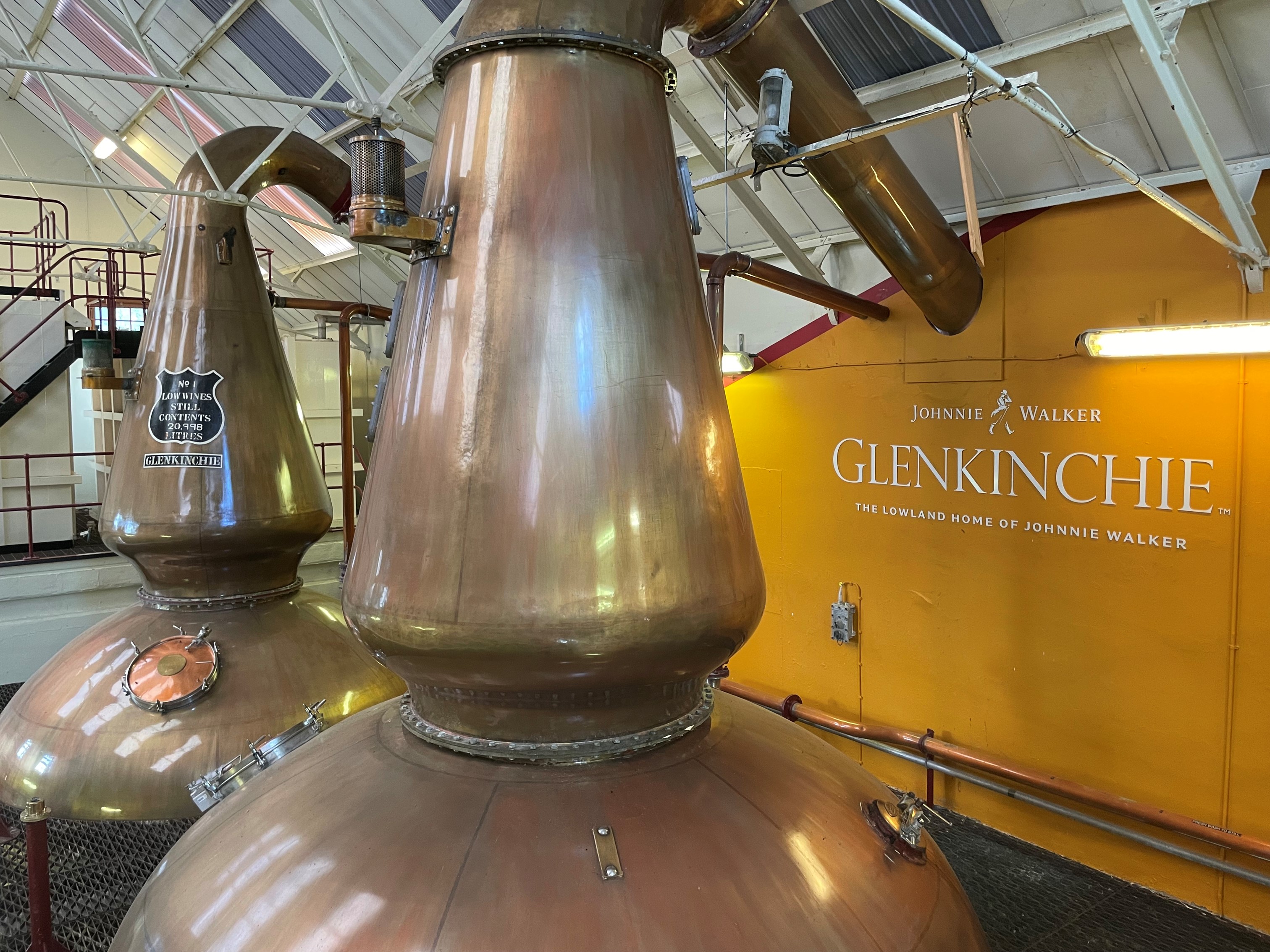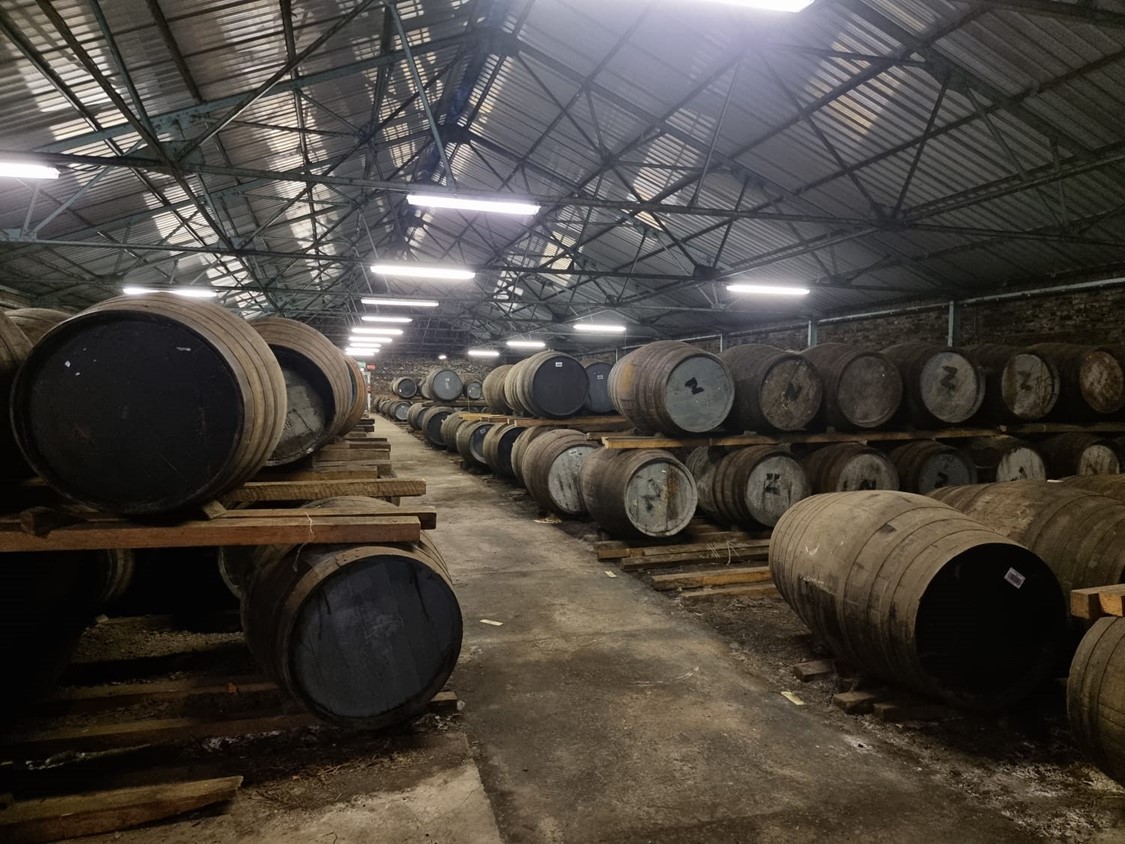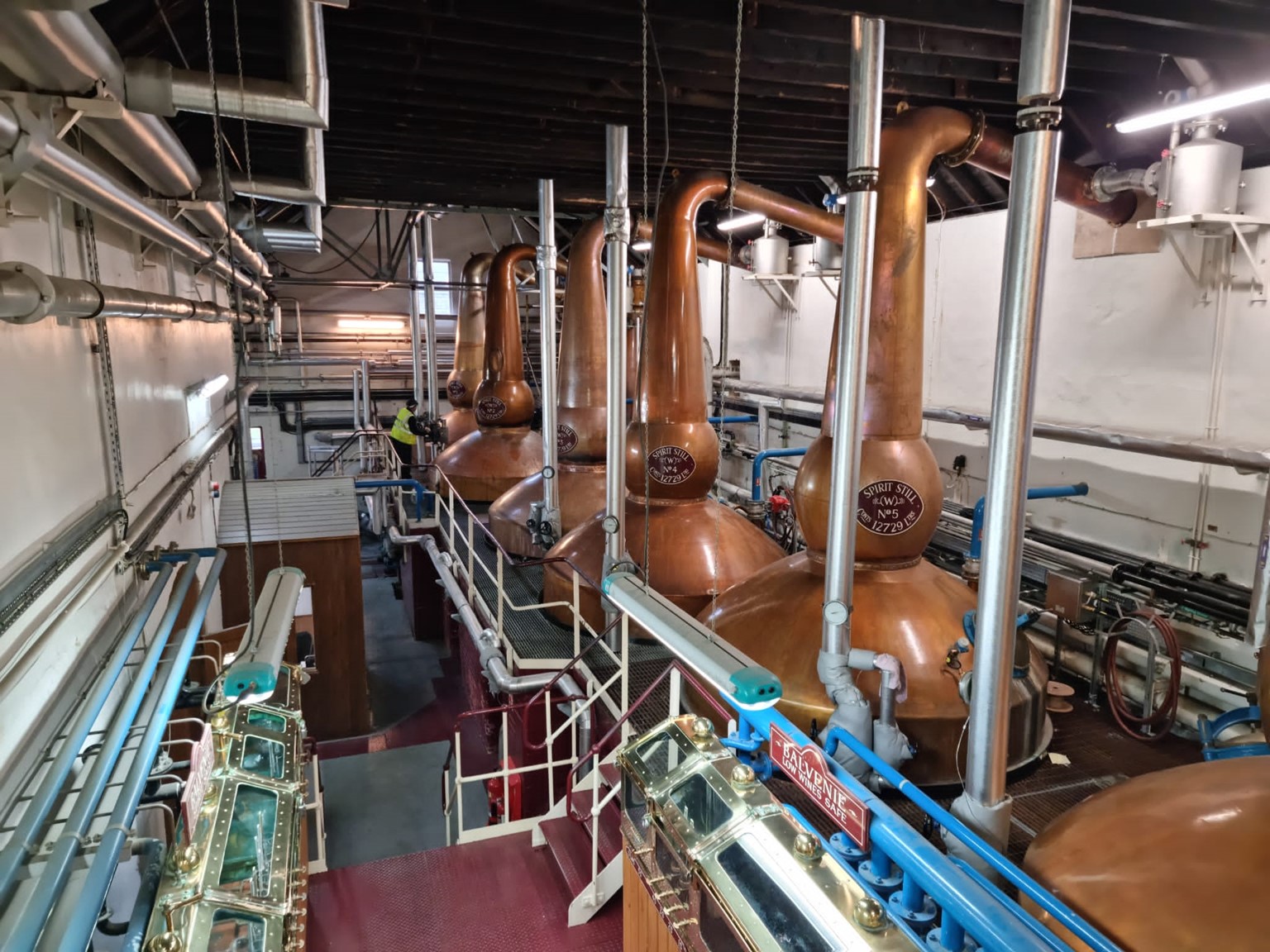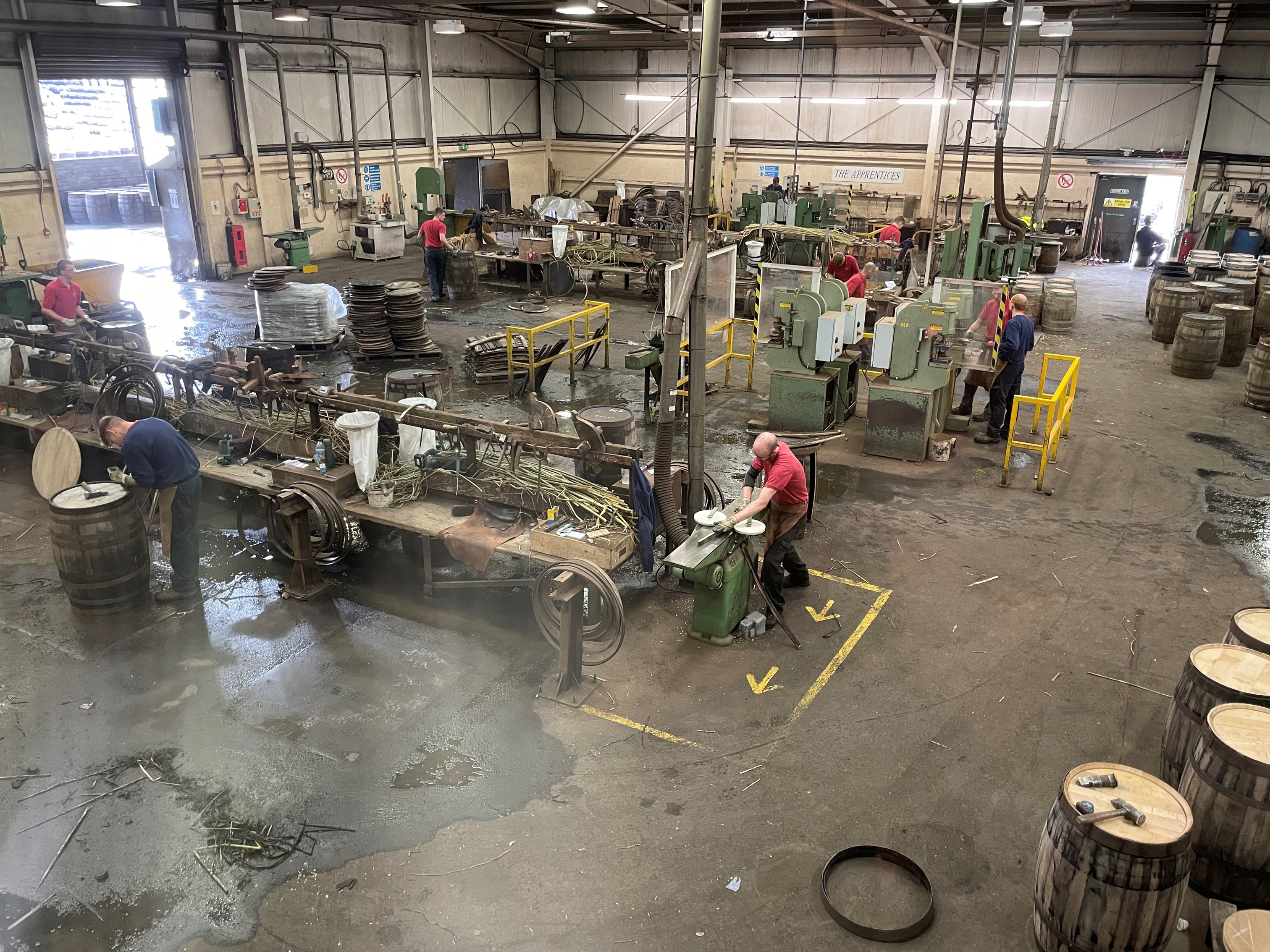Last month, the Farr Vintners team spent three days in Scotland on a fact finding (and dram drinking) mission to learn more about whisky. Having been selling everything from single bottles to full casks for a number of years now, and with the recent release of our very own independent bottlings, it was the perfect time to take a deep dive, in situ, into this unique and inimitable drink.
Not being as knowledgeable or as experienced as some of my colleagues, this trip was a complete revelation to me and, I have to say, I’m hooked. I’ve already bought a selection of 30cl tasters so I can build up my knowledge of regions, styles, producers, finishes and ages and I’ve already added a few select bottles to my rapidly growing collection.
As someone who has always found the different regions, styles and flavours of whisky fascinating in theory, but hadn’t really got on with whisky in practice, I quickly saw the error of my ways. I would go so far as to say if you think you don’t like whisky, you probably haven’t tasted the right one yet. There’s something for everyone from the light and floral delicacies of the Lowlands to the smoky and peaty beasts of Islay.

Arriving in Edinburgh, our first stop was the recently established Holyrood Distillery in the city centre, sitting in the shadow of the Salisbury Crags. This is a new distillery and by law, whisky must be aged in the cask for three years. As a result, they didn’t have any whisky for us to sample but we could taste their ‘new make’, a clear spirit that is the essence of whisky before it has been influenced by the cask. This turned out to be very educational because we got to taste three different and niche styles – a fresh and fragrant one made from crystal malt, a rich and smooth one made from chocolate malt, and one made with sake yeast which had an unmistakably cheesy aroma. With a base knowledge of what whisky spirit tasted like, it was time to taste The Real McCoy.
We then headed out of town to the green pastures of the Lowlands to visit the Glenkinchie distillery. Owned by Diageo, this is the Lowlands home of Johnnie Walker and one of their ‘Four Pillars’ collection – that is to say the four key components of the Johnnie Walker blend. The grassy, floral style of Glenkinchie contributes to the complexity of the blend that is comprised from their Speyside, Highlands and Islay stalwarts.

Here it was explained that, because all whisky is made from the three same ingredients – malted barley, water and yeast – it is in fact the people and the place that makes each one different. Each region has its own broad style (Speyside = sweet, Highlands = smoky, Islands = peaty) but it is the choices that humans make along the process that ultimately have the biggest effect on the resulting product.
The first big decision is whether you choose to use hot air or peat smoke to dry your barley and effectively stop the germination process. Peat adds a distinctive smoky smell and taste to the whisky which you either love or hate. The next big decision is how clear or milky to make the 'wort' (to which you add yeast and start the fermentation process). This is done by adjusting the content of flour and grist when you mill the barley. A clear wort gives a fresh, floral style; a milky wort gives a nutty, cereal style.

The next decision is how long you let the fermentation run for. A short fermentation gives flavours of cereal and nuts; a moderate fermentation gives grassy, floral flavours; and a long fermentation gives fruity and tropical flavours. Last but not least (in fact, arguably, most importantly) what vessel you age the spirit in – and for how long – makes all the difference and ultimately dictates the style and the price of what is in your bottle.
Historically, the new make spirit would be aged in American oak barrels, which add vanillin and spice, and give the purest expression of the whisky. In recent years, distilleries have experimented with different types of casks from larger Sherry butts to Bordeaux barriques and Bourbon casks – and sometimes a combination of two casks. Each finish gives a distinctly different colour and taste to the resulting whisky, which explains the myriad of styles of whisky within each region and, indeed, within each distillery.

The longer you leave the spirit in the cask, the more it takes on the characteristic of the cask. For example, a five year old whisky would taste very fresh and ‘spirity’, whereas a 21 year old whisky would taste a lot more mellow and complex. The Angel’s Share (which sees about 2% per year evaporate) means that there will be precious little left in a 30+ year old cask and this is by far what accounts for the big premium over, say, a 15 year old.
To see this in action, we were taken into one of Glenkinchie’s ancient ‘dunnage’ warehouses, typically built with a slate roof, stone walls and an earthen floor. Casks are stacked two or three high as they would have been centuries ago. We were shown a line-up of casks of varying sizes, finishes and ages and invited to smell them. We were then permitted a dram each of our two favourites. They couldn’t have been more different, and the experience left us fortified for the long journey north to Speyside.

Heading along the A941 from Elgin to Dufftown is like driving up the D2 from Bordeaux city to the Médoc, in that you pass a veritable ‘who’s who’ of Speyside’s greatest names – Benriach, Glen Elgin, Glenrothes, Craigellachie, Balvenie, Glenfiddich and Mortlach. Speyside has the greatest number of distilleries of any of the whisky-producing areas of Scotland. Dufftown alone has six working distilleries - you really feel you like you are in the heart of the whisky world.
Our first stop of the day was at the Balvenie distillery, located next door to the much larger Glenfiddich distillery - both owned by William Grant. Balvenie is one of only seven distilleries with its own malting floor. Most distilleries buy pre-malted barely as this is much more cost effective and less labour intensive. It is also the only distillery that still practises all of the five ‘rare crafts’ onsite – growing barley, malting barley, an onsite coppersmith to repair the stills, an onsite cooperage to repair the casks, and their own malt master.

Our next visit of the day was not to a distillery but to the Speyside Cooperage. Here used and often damaged casks from all over the world – Bourbon casks from Kentucky, Rum casks from the Caribbean, wine barrels from Bordeaux – are repaired and reconditioned before being sent out to distilleries across Scotland and further afield. Watching a team of expert coopers (the apprenticeship alone takes four years) doing very hard (and noisy) work as they repaired cask after cask after cask, gave me a newfound appreciation (and respect) for the hard work that makes every bottle of whisky possible.
During the rest of our time on Speyside, we also visited Cardhu, Cragganmore and Glenlivet so we were able to learn more about each of these producers and get to understand their individual histories and experience their unique house styles. Amazingly, despite all the limelight that single malts receive, they only account for 10% of total whisky production. The lion’s share is blended whisky. Most distilleries see the majority of their production go into the signature blends of their parent company - be that Johnnie Walker, Grants, Dewars, et al. That which gets bottled as a single malt from a single distillery represents a tiny part of the overall market.
However, what is even smaller than these ‘vatted’ whiskies (where multiple barrels are blended together to create one whisky) are single cask bottlings. No two casks are alike and here you might be looking a limited batch of just a few hundred bottles. Obviously, the rarer the liquid – be that from the age of the whisky, or from how few bottles were produced – affects the price and the sky is the limit as to what one could pay.
While you can spend thousands (or even hundreds of thousands) on a bottle of something very fine and very rare, you don’t need to. A quick look around a wine shop or even a supermarket will reveal that you can buy an entry level bottle of, say, a 10 year old single malt from a famous producer for around £40. Now, let’s consider the value for money compared to a bottle wine. An extravagant £200 bottle of 75cl wine would give you six glasses at £33 per glass. By contrast, a £200 bottle of 70cl whisky would give you 28 drams at a touch over £7 per dram - about what you can pay for a pint of beer in some London pubs!
If you would like to talk to us about buying bottles of whisky to enjoy, or casks of whisky to mature (or perhaps, one day, bottle yourself), please do get in touch.